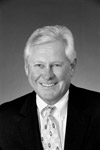| COVER STORY, FEBRUARY 2010
SET TO REBOUND
Texas’ major industrial markets begin to show improvement.
By Stephanie M. Specht
The economy continues to affect the industrial/flex market in much of Texas, but three of the state’s major markets --— Houston, San Antonio and Dallas/Fort Worth — are beginning to show signs of improvement.
Houston
 |
Edward Bane, Partner, Holt Lunsford Commercial
|
|
In Houston, industrial activity is still not what it once was, but it has started to pick up. Edward Bane, a partner at Holt Lunsford Commercial, says, “People are finally getting back out in the market and this has led to new activity that we did not see in the first half of 2009.” However, while there was an increase in activity in the fourth quarter, this activity has not exactly translated into done deals yet. “The deals that close in the next 45 to 60 days will set the benchmark for the year,” says Chris Kugle of NAI Houston.
Current vacancy rates have remained much the same in the Houston industrial market despite the slowdown, but some landlords are making concessions. “Landlords that have newer speculative space that has been on the ground for 9 months to a year are being more aggressive as far as free rent and TI,” says Kugle. “But, you are not seeing that much with second and third generation space. It has generally stayed the same.”
According to third quarter numbers, the vacancy rate for the Houston industrial market is about 7 percent, but Kugle expects that number to go up once fourth quarter numbers are tabulated. “I think we will see that number go up because quite a bit of speculative space was just finally delivered,” he explains. “A vast majority of speculative space in the last 18 months was constructed in the Port market, and there was also some speculative development in the North market as well.” Due to the current oversupply, Bane believes that speculative development will not begin again for 12 to 18 months.
The investment sales market continues to under perform; however, Banes notes that a decent sized portfolio is out on the market right now that could help increase activity. “If this portfolio transacts, it will help set a baseline for sellers and buyers to get a gauge on values. If that happens, more transactions will start occurring,” he says.
Both Kugle and Bane agree that the Houston industrial market will continue to rebound in 2010. “Many people are speculating that 2010 will be the same as 2009, but I am very optimistic that 2010 will be a much better year than 2009,” says Bane. Kugle echoes Bane’s sentiments saying, “We are cautiously optimistic that with the activity seen in the fourth quarter that by the second half of this year we will see things turn around. We are going in with a positive outlook for 2010.”
San Antonio
 |
Kimberly Gatley, SVP, Director of Research, NAI REOC Partners
|
|
While the San Antonio industrial market experienced a lag in performance in 2009 as well, Kimberly S. Gatley, senior vice president and director of research at NAI REOC Partners in San Antonio, says, “Of all of the market product types, the industrial market has managed to maintain probably the highest level of stability and is as close to equilibrium as possible given the current economic circumstances.”
And though there has not been a dramatic increase in vacancy rates and/or a dramatic decrease in rental rates, the industrial market in San Antonio remains a tenant’s market, forcing many landlords to offer concessions. According to NAI REOC’s fourth quarter industrial report, the average quoted triple net rental rate for all property types citywide retracted to $5.55 per square foot per year. This figure is down 2 cents from last quarter and 5 cents compared to a year ago, an annual decline of nearly 1 percent.
The market did, however, show positive gains at the end of the year. According to NAI REOC’s report, leasing activity in the fourth quarter resulted in 36,333 square feet of positive net absorption. Gains in the fourth quarter raised the annual absorption total to 154,762 square feet, which put the citywide direct vacancy rate at 13.6 percent compared to 13.8 percent posted a year ago.
In response to the current demand, speculative construction is on hold in San Antonio as well. Gatley notes that construction stopped early in 2009 after 315,000 square feet of new industrial space was completed. This is in addition to the 2.9 million square feet that was delivered from 2007 to 2008. “The pipeline of speculative development has shut down completely, but with no new product coming online, coupled with the economy making a turn like it is trying to do, I think that in 2010, the market has the potential to tighten back up,” says Gatley. “A full recovery is still a cloudy issue, but I think in the later half of 2010 we should see a pick up.”
Gatley also remarks that activity in the San Antonio industrial market throughout the rest of 2010 depends greatly on the national economy. “The retail sector has a lot to do with it,” she says. “Manufacturing is down because of the retail market and even though San Antonio is not specifically a manufacturing market we are not storing or moving things as much as we used to.”
Dallas/Fort Worth
 |
Michael Caffey, Managing Director,
CB Richard Ellis
|
|
The story is much the same in the Dallas/Fort Worth (DFW) industrial market. Terry Darrow, managing director for Jones Lang LaSalle Dallas/Fort Worth, notes that there is some measured optimism due to a slight uptick in activity, but he is still cautious because demand is subdued in comparison to activity in 2007. And while the DFW market did end the year with positive absorption, Michael Caffey, managing director in CB Richard Ellis’ Dallas/Fort Worth office, explains that while this is encouraging, the overall big picture is that demand is still weak.
Some users are taking advantage of the soft market, however, and in turn they are getting some great deals. “Generally in a market such as this, landlords would try to make short-term lease deals so when they expire they can reset to current market values; however, right now landlords are willing to make long-term lease deals at very aggressive rates,” says Caffey.
Darrow adds, “Quite frankly, tenants are making deals on brand new space at rates that we thought were inconceivable even just a year ago. And I think that the vacancy rate dictates that.”
Total vacancy rates are sitting at 11.6 percent for all submarkets, which equates to 76.5 million square feet of vacant space in the DFW industrial market. The 11.6 percent vacancy rate is an increase from the same period last year but down from last quarter.
 |
Terry Darrow,
Managing Director,
Jones Lang LaSalle
|
|
As vacancy rises, rental rates are decreasing. Asking rental rates are $3.59 per square foot and the high range for rental rates is from $3.80 to $3.60 per square foot. However, Darrow explains that asking rates are just one piece of the puzzle, achievable rates are actually lower.
“Achievable rates are closer to $2.40 to $2.50 per square foot, which is down 20 percent to 25 percent,” he says. “Most asking rents for these buildings in 2006 and 2007 were $3.25 per square foot.” Today, tenants are making moves to either consolidate or become more efficient. “They are saying, ‘show me how to save money, impact my bottom line and how can I be more efficient’,” says Darrow.
Caffey notes that the one thing that could help the market rebound more quickly is the dramatic decrease in new construction. In the fourth quarter of 2009, approximately 900,000 square feet of new construction was delivered, and in the third quarter of 2009, about 3.1 million square feet was delivered. Approximately 10 million square feet was delivered in total for 2009, about half of what was constructed in 2008. “In 2010 we are estimating that there will be around 5 million square feet delivered, the lowest level since 2005,” notes Caffey. “The brakes have been put on development and that is a healthy thing.”
The investment sales market for the industrial sector has slowed to a snail’s pace in DFW as well. “There is a huge spread right now in bid/ask,” says Darrow. “Most people are not willing to sell for what people want to pay right now. When XYZ institution thinks that we have hit the bottom and decides to start to buying again then others may follow, but that has not happened yet.”
Caffey believes that activity in the DFW industrial market will look much like what was seen in 2009, but long-term this market remains the ideal location for business for a variety of reasons. “The industrial market in DFW is supported by its central location, which makes it a great market for distribution. Our highways, railways, and airway infrastructure and our relatively low cost of labor and low cost to operate a business are keeping us in a good position for recovery,” explains Caffey. “In the long-term, DFW has and will continue to have the fundamentals for a healthy market, and it will potentially recover more quickly than other U.S. markets as it relates to the industrial market.”
©2010 France Publications, Inc. Duplication
or reproduction of this article not permitted without authorization
from France Publications, Inc. For information on reprints of
this article contact Barbara
Sherer at (630) 554-6054.
|
